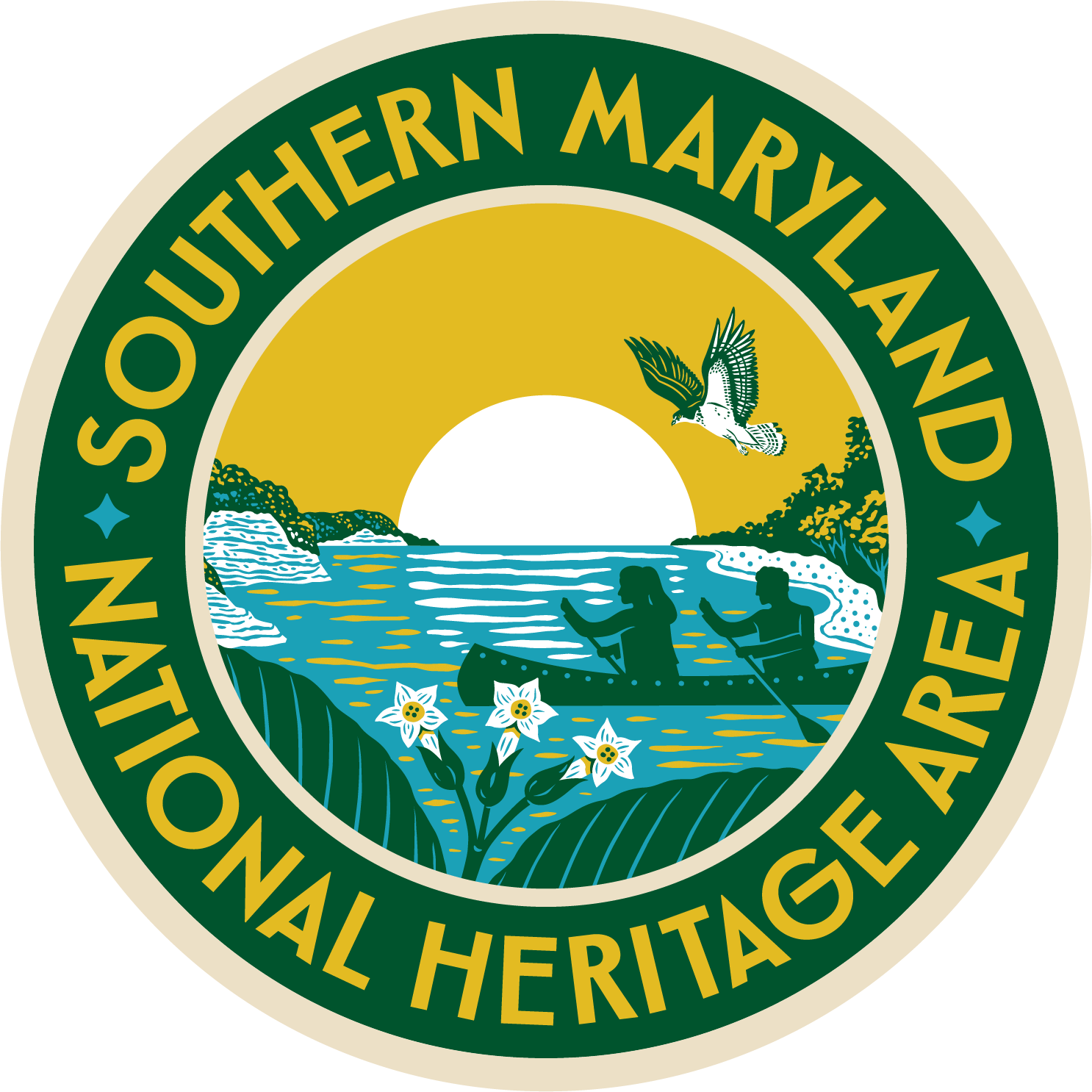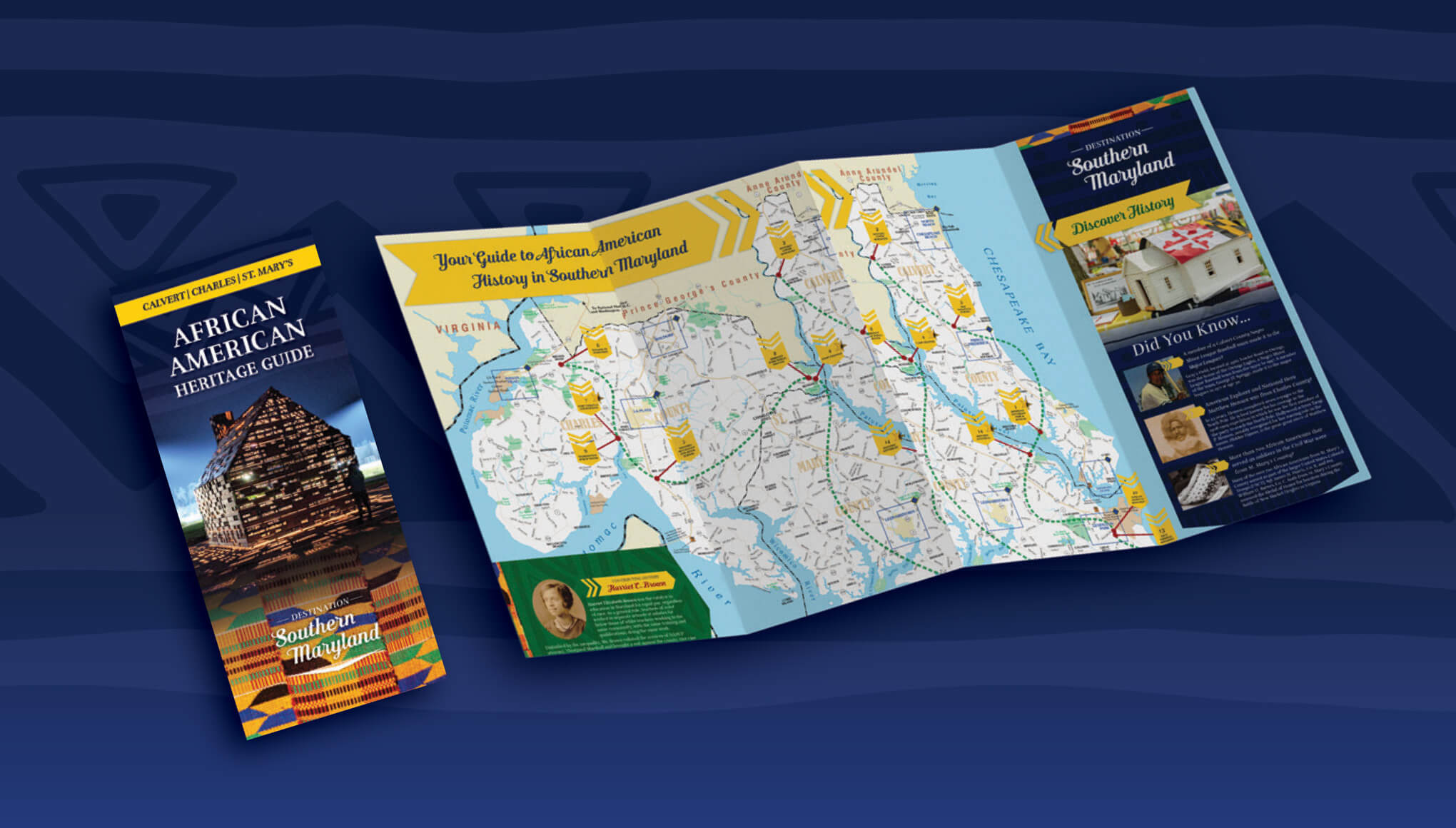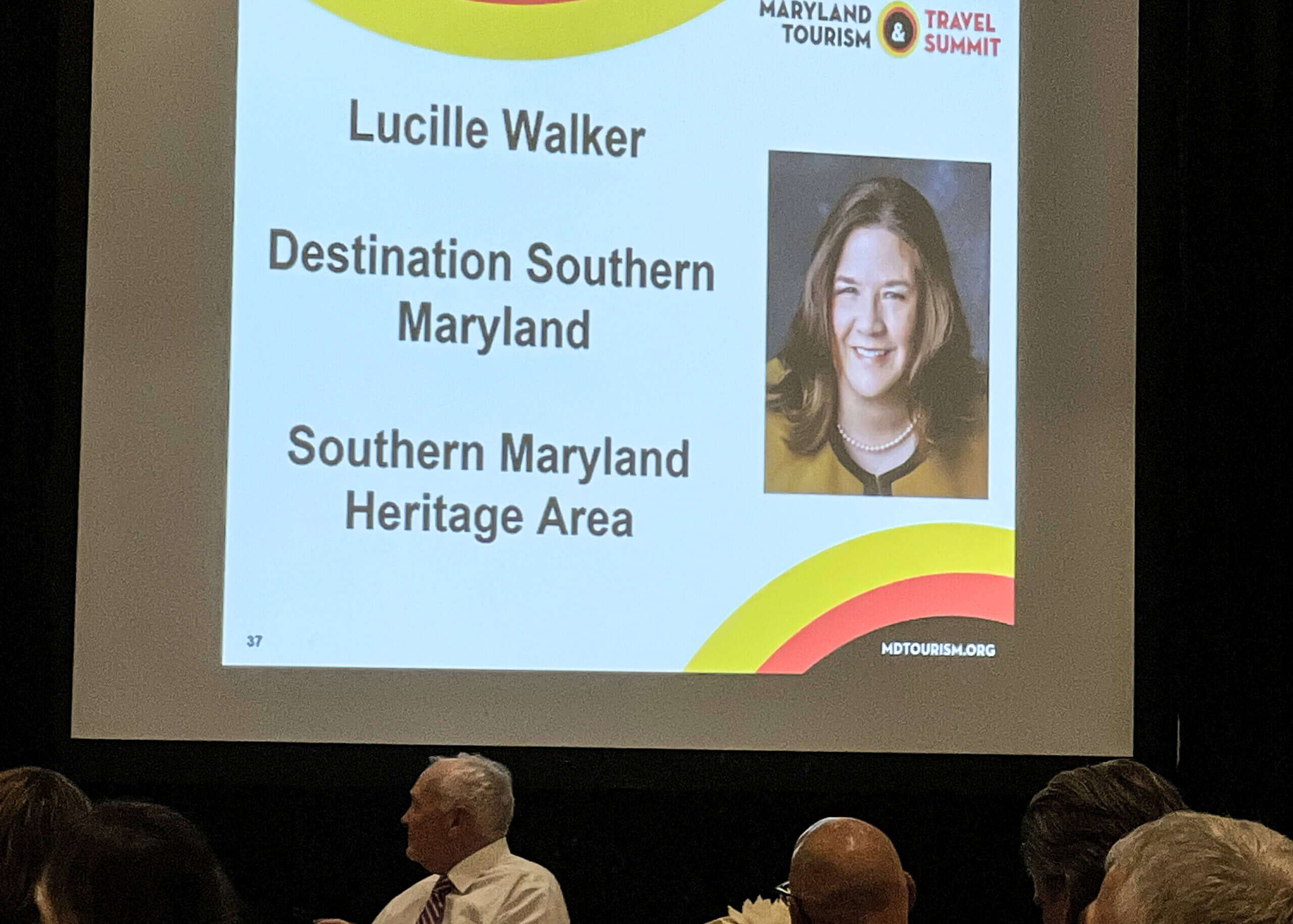From The Bay Net, read original article here: https://www.thebaynet.com/articles/0421/governor-hogan-visits-st-marys-fort-archaeological-site-dig-site-leader-discusses-whats-ahead.html
ST. MARY’S CITY, Md. – Governor Larry Hogan[R] visited Historic St. Mary’s City(HSMC) on April 28 and was excited to get a firsthand look at the St. Mary’s Fort archeological site that is currently being excavated. This comes a month after HSMC announced the discovery of the fort, which is the first European colony in the state and marks a milestone for archeology in the region.

Hogan was alongside State Senator Jack Bailey[R], and they were both guided by Dr. Travis Parno who is leading the excavation. Parno explained the history of the site to the politicians, including geophysical surveys and conceptual pictures of the fort. Parno also showed them around the fort grounds and described what has been excavated so far, including a palisade trench, a cellar, and a cannon bastion.
Hogan, asking questions about the archeological process, seemed impressed and fascinated by the work taking place at HSMC. Parno and one member of the dig crew showed him how they sift through the exhumed soil and use a sift to sort out artifacts. Just within the small sample of dirt that they sifted through to demonstrate the process, they managed to find an artifact ranging from pieces of a tobacco pipe, ceramic, and brick.

At the beginning of the visit, Parno presented some of the more impressive artifacts they found during the dig. These included projectile points, beads, the handle from a musket, and some munitions such as a cannonball.

Later in the day, the congregation convened at the re-constructed statehouse, overlooking the St. Mary’s River. It was there HSMC was issued a Governor’s Citation for their ongoing work. After the citation was presented, Bailey took the opportunity to thank the Hogan for his support, saying:
“As you all well know, if you looked at the budget this year between the Higher Education Center and right across the street at St. Mary’s College… over $150 million that his administration has put into St. Mary’s County just for education. When we look at broadband, 98% of the children in St. Mary’s County have broadband, and it’s working today because of our Governor.”

Bailey also commended the governor for allocating $18 million in funding for Historic St. Mary’s, and his commitment to the region overall. Hogan responded saying:
“Thank you for your leadership in Annapolis, and thank you for the kind words. I want to thank everybody, your county commissioners, the folks here in St. Mary’s County, everybody here at Historic St. Mary’s City, and all the folks that have been working so hard. I just want to thank all of you, it has been a pleasure to play a small part in helping.”

Recognition such as the Governor’s Citation has been seemingly coming in droves for the Historic St. Mary’s City announcement of the fort’s discovery. The livestream in which they detailed their discovery on Maryland Day had appearances from several high-profile figures in Maryland politics ranging from Congressman Steny Hoyer[D-MD05] and Senators Chris Van Hollen[D] and Ben Cardin[D]. All three also stated their intention to put forward legislation to recognize Southern Maryland as a National Heritage Area. But praise comes just at the beginning of the archaeological study of the site, and there is more to learn as the excavation continues.
The Future of the Site

Earlier this month, TheBayNet.com sat down with Parno to discuss plans for the site.
“We’re gonna be busy, for sure,” Parno explained. “But even just looking at St. Mary’s Fort, I was planning for a minimum of 10 years of work on that site. And now as you see, we’ve added two more sites. Which does feel a little crazy to look at a site the size of a football field and saying, you know what, it’s not enough.”
Parno is referring to the two Native American Sites adjacent to St. Mary’s Fort, which both pre-date European colonization of the area, and range between 500 and potentially over 5,000 years old. These sites were first discovered in during archaeological surveys in the 1980s but have never been subject to any large-scale excavations, until now.
When the fort was discovered, HSMC began plaining how there were going to go about the excavation. Since then, given the proximity to native sites, they quickly saw an opportunity to expand the scope of their inquiry to include additional sites along with St. Mary’s Fort. Parno said in doing this, “I think it’s going to make them so much richer,” regarding the potential stories to tell from the history of the site.
During the Maryland Day Celebration, HSMC announced the “People to People Project,” which is in conjunction with native groups such as Piscataway Conoy Tribe and the Piscataway Indian Nation. They have been in contact with these groups since 2020 before the discovery of the fort was announced to the public. They hope that their involvement will provide a more accurate and truthful insight into the history of the area.
“In our engagements with members of the native community, it became clear that what we might call traditional colonial stories have a very different meaning to members of our community,” Parno said. “Other members of our community, folks who are our native peoples who are, in some cases within the African American community. Some of our stories, because of the elements of history that aren’t quite as nice and worthy of celebration and more difficult aspects of history, but because of what St. Mary’s Fort represented for our native colleagues, we needed to broaden our scope.”
This broadened scope means that in all aspects of the site different perspectives will be taken into account whether it’s during the academic study, or how eventually they will interpret their findings to the public.
“We want to tell a story that’s going to draw a large audience. And what that means is doing things respectfully and carefully and diligently,” Parno said. “Getting together with the native community from the beginning and trying to shape the project with their thoughts and their perspectives and their input in mind from the beginning, I think just helps us avoid some of those pitfalls that can come up… Archaeologists who might be well-meaning, but might be ignorant of certain cultural beliefs or practices or feelings on the part of a community.”
This broadened scope also means more work for Parno and his team to complete the archaeological study and establish a living history exhibit before Maryland’s 400th birthday.

Traditional archaeological excavations at HSMC have taken place in the spring and summer, but excavation on St. Mary’s Fort is ramping up because of the magnitude of the discovery.
“We often would do excavations just during the summer, corresponding with when we have our annual field school and historical archaeology,” Parno explained. “But with the funding that we’ve received thus far, our excavations are pretty much ongoing throughout most of the year, when we are able to be outdoors. That’s generally sort of mid-May until mid-December.”
Work for them doesn’t stop during the winter when digging isn’t viable. That is the period when artifacts are taken into a lab and are analyzed.
Archaeological excavation conducted by HSMC also relies heavily on involvement from college students, who work on sites during “field schools” that take place generally during the summer. The field school at Historic St. Mary’s is accredited by St. Mary’s College of Maryland and was already seeing a surge in applicants before the discovery of the fort was announced. While this was exciting, it did mean that some applicants had been turned away, which was rare for them. However, Parno said that there are plans to potentially raise the cap of students admitted to the program, as well as creating potential volunteer programs for people to assist with excavation.
Even though there is considerable work to be done on the site, HSMC is trying to provide another way of experiencing the site while the excavation is ongoing. The site is currently open to the public, and Parno said they are working to incorporate it into a tour.
The discovery of St. Mary’s Fort has already been monumental in Maryland history, but now Parno says that since COVID-19 has an end in sight, he is excited to ramp process of excavation and begin to have in-person meetings with their partners in the People To People Project to discuss the interpretation of the site over the next year.
“I think the best is yet to come,” Parno said.




